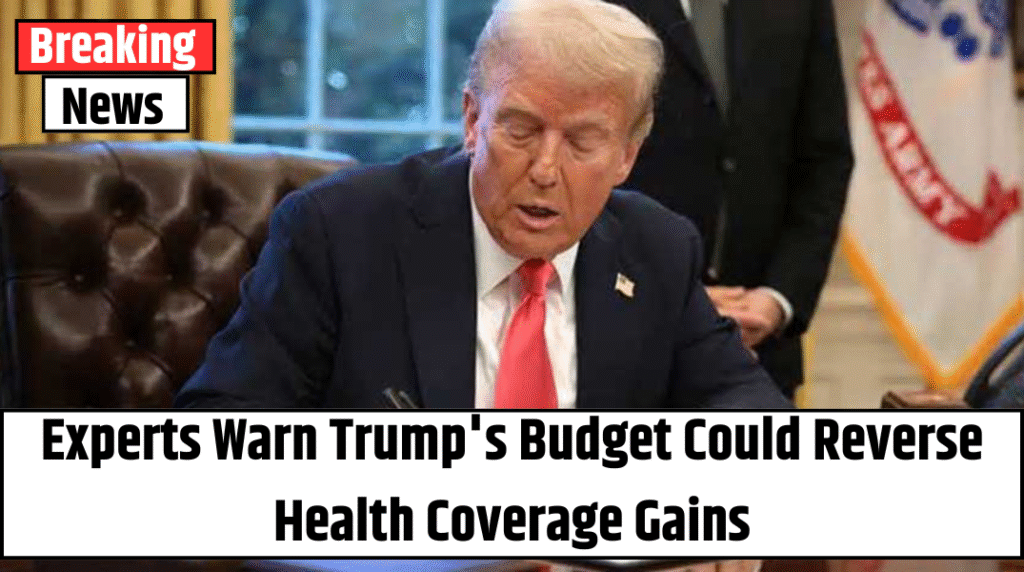CLARKESVILLE, Ga. — When Alton Fry visited his doctor last September with concerns about his blood pressure, he never imagined he’d leave with a life-altering diagnosis: prostate cancer.
At 54, the self-employed masonry contractor had never carried health insurance. “I’ve always been healthy,” Fry said. “I didn’t think I needed it.” Focused on rebuilding his life post-incarceration, staying sober, restarting his business, and reconciling with his wife, buying insurance wasn’t a priority.
Now, facing medical bills that could total tens of thousands of dollars, Fry is navigating a health crisis without insurance. With a combined household income of about $48,000, he and his wife fall into a coverage gap — earning too much for Georgia’s restricted Medicaid program but finding marketplace insurance plans either too costly or too limited.
To help offset costs, a friend created a crowdfunding campaign in April. Fry said he’s opted for a less aggressive, more affordable treatment plan than his doctor recommended. “Middle-class Americans are stuck. There’s just no help,” he said.
A Growing Uninsured Crisis
In the first half of 2024, over 26 million Americans lacked health insurance, according to the CDC. Uninsured individuals tend to be low-income adults under 65, disproportionately people of color, and mostly living in Southern and Western states.
The gap is widest in states like Georgia that haven’t fully expanded Medicaid. In 2023, the uninsured rate in these 10 states was 14.1% — nearly double that of states that expanded Medicaid, which averaged 7.6%, per KFF data.
And that disparity may deepen. Policy analysts say the number of uninsured could skyrocket if budget proposals backed by former President Donald Trump and a Republican-led Congress are enacted. The House-passed “One Big Beautiful Bill Act” — focused on tax cuts and federal budget cuts — could strip coverage from as many as 10.9 million Americans by 2034, according to the Congressional Budget Office. If tax subsidies for ACA plans expire, and additional rule changes take effect, that figure could climb to 16 million.
Public opinion reflects deep concern: in a recent KFF poll, nearly two-thirds of respondents disapproved of the legislation, and more than half feared it would undermine their own families’ ability to afford care.
“The consequences could be devastating,” said Jennifer Tolbert, deputy director of KFF’s Program on Medicaid and the Uninsured. “We’re looking at the most significant potential rollback of public health coverage in modern history.”
A Fractured System
America’s health care structure is a patchwork of programs and providers, cobbled together over decades with no centralized system to guarantee universal coverage.
Also Read – Health Officials Warn of Summer Case Rise from New COVID Variant
It wasn’t always meant to be this way. President Franklin D. Roosevelt once considered including universal health insurance in the 1935 Social Security Act, but faced pressure from physician groups and business interests. Employer-based coverage grew during World War II, when wage freezes led companies to offer health benefits to attract workers. In 1954, tax exemptions on employer-sponsored plans cemented job-based insurance as the U.S. norm.
But that model excluded large swaths of the population — the elderly, the unemployed, children, and people with disabilities. Over time, the federal government created public programs: Medicare and Medicaid in 1965, CHIP in 1997, and the ACA in 2010. Even so, gaps persist.
“There’s no one entity responsible for ensuring that everyone is covered,” said Harvard policy professor Mark Shepard. “So people fall through the cracks — and many don’t even know they’re eligible for help.”
Research suggests that about half of all uninsured Americans might qualify for Medicaid or ACA subsidies but aren’t enrolled, often because they’re unaware or can’t navigate the complicated process. Even subsidized plans may still be financially out of reach.
Real Lives, Real Consequences
Yorjeny Almonte, 23, works full-time at a cabinet factory in Allentown, Pennsylvania. Her $2,600 monthly paycheck barely covers essentials. Health insurance through her employer would eat up almost 10% of her income, so she initially passed. But after her mother flew to the Dominican Republic to access care due to lack of insurance, Almonte reconsidered — only to find she had missed her enrollment window.
“I have to wait until the end of the year,” she said.
In Alabama, 30-year-old Kiana George landed in the ICU with a hypertensive emergency after she lost Medicaid coverage in 2023. Her new job pays $800 a month — too much to qualify for Medicaid in the state, which hasn’t expanded the program. But it’s not enough to afford ACA coverage either. Now burdened with nearly $7,000 in medical debt, she’s forgoing treatment for ovarian cysts.
“I can’t afford to go back,” she said. “So I’m just hoping it doesn’t get worse.”
Policy vs. People
Researchers widely agree: lack of insurance significantly worsens health outcomes. A 2024 report from the National Bureau of Economic Research found that Medicaid expansion lowered mortality rates by 2.5% among low-income adults. Earlier studies show health insurance is associated with better outcomes for conditions ranging from cancer to cardiovascular disease.
Also Read – WHO Launches $1.5 Billion Appeal to Address Global Health Emergencies
Despite this, recent legislation threatens to reduce or revoke coverage for millions. A central provision in the House bill would require many Medicaid enrollees to work at least 80 hours a month — a rule that critics say penalizes vulnerable groups who already face employment barriers.
House Speaker Mike Johnson defended the requirement. “If you can work and choose not to, you’re abusing the system,” he told CBS News.
But in Georgia, where work requirements already exist, people like 45-year-old Labon McKenzie are stuck in limbo. After a workplace accident left him with lasting injuries, McKenzie lost his job — and his insurance. He hasn’t been approved for disability benefits. Recently, when he started seeing double, he canceled an ophthalmologist appointment because he couldn’t pay the $300 up front.
“I’m trying expired eye drops and wearing a patch,” he said. “What else can I do?”
McKenzie wants to get better — and to work again — but said he can’t get the care he needs to heal. “I just want my body fixed,” he said.
What’s Next?
Experts warn that stripping coverage without addressing the root causes of high health care costs — including administrative complexity and inflated prices — will only worsen inequality. “When people have to pay more for health care, they use less of it,” said Aaron Carroll of AcademyHealth. “That disproportionately harms those who are already sick and poor.”
Despite spending more per person on health care than any other wealthy nation, the U.S. continues to leave millions behind.
And for people like Alton Fry, trying to manage a cancer diagnosis without insurance, that reality is painfully clear.



